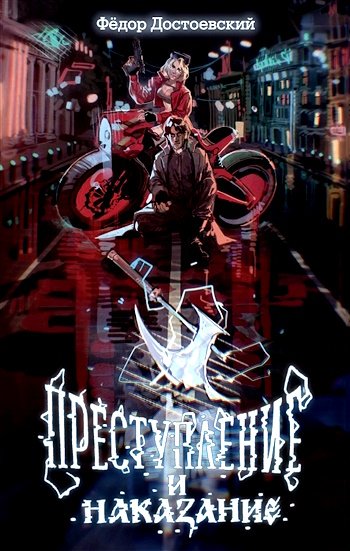Of melting sweetness?
In the rapturous swell,
In the turbulent spell,
In the welcoming wave,
Holding all.
I’m sinking,
I’m drowning,
Unaware,
Highest love!]
08-C2205 8/17/02 3:39 PM Page 247
Isolde Resurrected
/
247
Although initially restrained to a sitting position, Lawrence, when singing these lines, slips out of her role and transposes Isolde’s passing into a dramatic act of physical recovery. It is precisely when Wagner’s libretto endorses death as a state of oceanic self-transcendence—“In dem wogenden Schwall . . .”—that Lawrence overcomes her paralysis. As she rises in front of a staggered audience, Lawrence thus actively remakes Wagner’s original conception. Wagner, the reader might recall, conceived Tristan und Isolde as a tribute to Arthur Schopenhauer, whose philosophy he had admired ever since the early 1850s. Tristan’s and Isolde’s respective deaths, in the eyes of the composer, hallowed the redemptive power of individual self-abnegation; they articulated a triumphant victory of love over the agonies of will, desire, and subjectivity. The last sequence of Bernhardt’s film, by way of contrast, recasts Wagner’s opera as a quest for unencumbered willpower, sensuality, and self-presence. Prioritizing affirmative individuation over decadent self-denial, the film de- and reconstructs Wagner’s text according to the perspective of none other than Wagner’s most polemical critic—Friedrich Nietzsche. Like Nietzsche, who in retrospect regarded Wagner as “one of my sicknesses,”22 Interrupted Melody employs Tristan und Isolde to revoke Wagner’s desire for death and to embrace instead the exuberance of heightened subjectivity and sensual experience. In doing so the film renders Wagner’s music drama not a container of immutable meanings but a source of conflicting interpretations and textual appropriations. Cultural meanings and pleasures here are realized not in the text itself but in selective acts of reception, in the open dialogue between text and interpreter, past and present.
The film’s emphasis on the fundamental instability of the past and the dynamic relationship between textual production and reception clearly distinguishes Bernhardt’s use of Wagner from the Wagnerian predilections of Nazi cinema as discussed in the first part of this study. Rather than enlisting Wagner in an attempt to represent history as nature, Interrupted Melody creates a sense of representation as an arena in which to negotiate conflicting notions of identity. Unlike Nazi Wagnerianism, which aspired to domesticate bodies and desires by means of an overabundant proliferation of signs and symbols, Bernhardt’s Wagner illustrates that the individual body “itself—and not merely its representation—is involved in varying and shifting constructions of agency.”23 Echoing Chaplin’s encounter with different Wagnerian legacies in The Great Dictator, Bernhardt’s Interrupted Melody thus also challenges Hollywood’s essentializing view of Wagner as the dystopian archetype of decadence and destructiveness. It draws our attention to the fact that in modern societies nothing concerning the meaning of
08-C2205 8/17/02 3:39 PM Page 248
248
/
Berlin in Hollywood, 1939 –1955
cultural expressions goes without saying, that the symbolic orders of modern culture are not monolithic but internally diversified, and that each period has to create its values and meanings out of itself.
wa g n e r s c o p e
After the 3-D extravaganza Miss Sadie Thompson, the CinemaScope production Interrupted Melody was Bernhardt’s second attempt to cater to the changing exhibition standards of the 1950s. The film proved Bernhardt’s ability to adapt effectively to the fluctuating demands of postwar Hollywood filmmaking. With its operatic tableaus and horizontal arrangement of actors across the visible space, with its prioritization of mise-en-scène over montage, Interrupted Melody in fact provided a kind of textbook example for how to align film style with the revolution in exhibition technology. Bernhardt was keenly aware of the fact that widescreen exhibition formats called for new staging and editing principles. When directing Interrupted Melody, Bernhardt was able to actualize his experience as a theater practitioner during the Weimar era in order to resolve some of the stylistic problems inherent in the use of anamorphic widescreen lenses and prestigious Technicolor film stock.
Although offering unprecedented possibilities of wide-angle coverage, the anamorphic lenses of the mid-1950s had a significantly longer focal length than their nonanamorphic counterparts. Amplified by the use of color film stock, which required more light than black-and-white material, the initial constraints of widescreen technologies precluded the simultaneous representation of sharp foregrounds and well-focused action in the background, as much as they ruled out smooth shot /countershot transitions. The majority of directors working with CinemaScope during the 1950s solved these technological problems by staging action laterally across the frame and generally reducing the frequency of cuts. The overwhelming panoplies of early CinemaScope productions (majestic landscapes, historical mass spectacles, theatrical performances) thus resulted from the industry’s desire to establish a new cinema of astonishment just as much as from the need to circumvent crucial predicaments of anamorphic representation. To shoot films in CinemaScope, according to Elia Kazan, required an arrangement of figures or objects perpendicular to the spectator’s look,
“more like a stage—more ‘across.’”24 It called for horizontal displays instead of perspectival arrangements, diagrammatic spread instead of a mul-tiplane depth of field. Whereas many directors and cinematographers considered the widescreen format a hapless return to the theater stage, others
08-C2205 8/17/02 3:39 PM Page 249
Isolde Resurrected
/
249
celebrated CinemaScope’s emphasis on tableau and theatricality as the culmination of film’s artistic possibilities. The principles of lateral staging and linear horizontal arrangement, as critics such as Jacques Rivette argued during the 1950s, “would finally make cinema an art of mise en scène, not only by minimizing cutting but also through achieving a classical, friezelike serenity.”25
CinemaScope advanced the appeal of sweeping panoramic sights to one of the most marketable commodities of 1950s American cinema. Yet in rendering the cinematic image big in more than only one sense, the widescreen format also became, as Bernhardt himself claimed in unison with Rivette, a testing ground for directorial competence, choreographic artistry, and new modes of spectatorial activity. Interviewed about his experience with CinemaScope in 1977, Bernhardt recalled: “In my opinion, the saving for the average American director was the cut. Cuts saved a lot of lacks of continuity—today more than ever. But I didn’t need the cut for safety, because I planned ahead. So my cuts were never arbitrary; they were always thought through. . . . [Y]ou have to use CinemaScope right. And CinemaScope allows you to avoid cuts and demonstrate a certain faith in the viewer’s intelligence to pick things out himself.”26 Far from simply overwhelming the audience, the monumental images of the 1950s, in Bernhardt’s view, produced new forms of spectatorial activity. CinemaScope required the individual viewer to scan the picture for nodes of visual information, to select whatever one deemed as relevant, and thus to assemble a highly personal film in one’s own imagination. Lateral staging principles generated shots with more than just one center, and it was therefore left to the individual viewer to decide what was of greater and what of lesser importance.
One could no doubt raise many good arguments against Bernhardt’s assessment of widescreen images as sources of spectatorial participation.
What is interesting, however, is that Interrupted Melody at times indeed uses the lateral style of widescreen cinema to complicate the viewer’s relation to what he or she sees and hears onscreen. In particular the extended operatic interludes of Interrupted Melody allow Bernhardt to stage horizontal arrangements in which the actors’ gestural excess multiplies possible meanings within the uncut image itself. Consider Lawrence’s performance of Puccini’s Madame Butterfly in Monte Carlo, a three-and-a-half-minute musical number presenting the famous “Un bel di vedremo” aria of act 2
in front of a lavish orientalist set. Parker’s/Lawrence’s face remains austere and motionless throughout the entire interlude. All expressiveness has migrated into the work of her fingers. Rather than dwarfing the delicate movements of her hands, however, the widescreen format here places Lawrence’s
08-C2205 8/17/02 3:39 PM Page 250
250
/
Berlin in Hollywood, 1939 –1955
gesticulation into an extravagant spatial context. The horizontal staging and frontal representation of objects and actors draws the viewer’s attention to the artificiality that marks not only the art of opera but also, and even more so, its filmic representation. CinemaScope thus enables the construction of a highly theatrical space of mimesis and masquerade, a space in which the seemingly authentic and original is constituted as effect and in which performative excess allows the audience to understand that melodramatic intensities themselves are nothing other than performances and gestures. As Norbert Grob has put it, “The clarity with which Parker plays her role on the opera stage proves to be a play within the play, whereas Parker otherwise presents rather than represents the role of Marjorie Lawrence. The exaggerated postures, the exaggerated gesticulations of the musical numbers imply the artificial gestus of opera. For opera lives not just from the world of great emotions, but also from gestus, from the fact that the world only exists as a world of great emotions.”27
Bernhardt’s CinemaScope, then, does not simply allow Hollywood to capture the masterpieces of European opera in their full visual grandeur; on the contrary, it recognizes the artifice of opera and its “pretension to lofty utterance”28 as a guide to widescreen filmmaking. As the film positions CinemaScope and European opera as stylistic doppelgänger, it curiously inverts the parameters of earlier German controversies about the meaning of Americanism. As I have shown, throughout the first decades of the twentieth century German debates about the New World drew heavily from the representation of American society in newly developing mass media such as the cinema and the popular press. Many contributions to these debates in fact suggested that these media themselves were intrinsically American.29 Bernhardt’s Interrupted Melody reverses the logic of this argument: CinemaScope here not only disseminates the most extravagant expressions of European culture to American middle-class audiences, but it presents itself as a direct heir to nineteenth-century opera. CinemaScope is opera with other means. It redeems, rephrases, and popularizes the stylistic repertoire of European high art. The medium thus turns out to be the message. In resurrecting Wagner’s Isolde in its final sequence, the film allegorizes its own cultural mission. It recuperates the stylistic idioms of European high art in order to consummate Wagner’s desire to combine all art forms in a lofty presentation of audiovisual attractions.
Nothing would be more foolish, though, than to see Bernhardt’s stylistic doubling of Wagner and CinemaScope as a return of Nazi cinema and its desire to redefine film as an ideologically effective total work of art. Surely, in projecting Wagner majestically onto the Hollywood screen Bernhardt’s

























